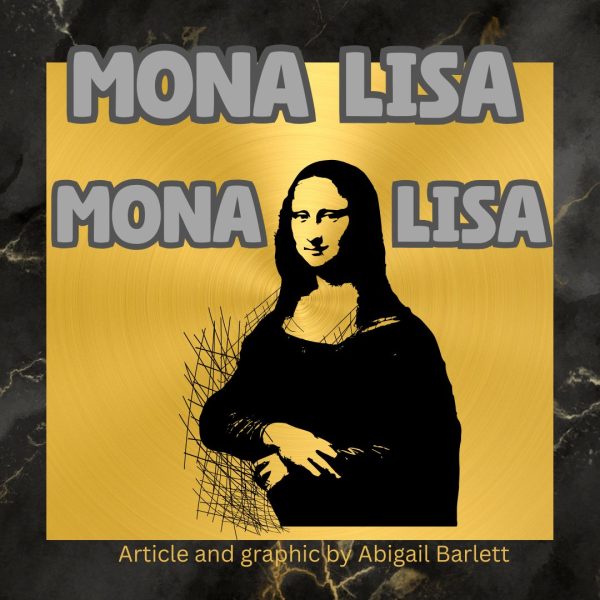The Evolution of Feminism
The feminist movement has defined our lives for decades, but how has it changed with us?
If you’ve opened your phone recently, you’ve probably seen or heard the word ‘feminism’ in some shape or form. It is rare these days to have never heard of the concept: We learn about it in schools, read about it on social media and in the news, and hear about it from our family and friends. Even at Enloe we feel it’s influence, from dress code protests to the formation of feminist clubs like The Butterfly Effect. So what exactly is feminism? A simple definition can give you the basics: “the advocacy of women’s rights on the basis of the equality of the sexes.” But even this bland definition can come to mean different things in different generations. To craft a better understanding of this generation spanning-movement, I decided to look to its past.
When looking at the history of Feminism, the movement is not defined by a simple one line-sentence, but by its interaction with the social and political issues of defined time periods, categorized as waves. While the concept of feminism had appeared before, the first major wave of feminism came in the late 19th century- early 20th century. This era, in addition to being associated with mostly white women, is characterized by the global fight for women’s suffrage and the erosion of the belief that women were property. The second wave, inspired by the Civil Rights movements and anti-Vietnam War protests, fought to fight institutions that maintained gender norms and held women back, resulting in the equal pay act and Roe v. Wade, the landmark case that legalized abortion in America. A notable characteristic of this era is a dogmatic split in feminism, with mainstream feminism focusing on institutional reforms, while radical and cultural feminism were intent on reshaping society without the influence of the patriarchy.
The third wave (the segway into modern feminism) saw the introduction of the Riot Grrls, a feminist submovement that combined politics and punk rock. With them came the idea that women should be allowed to express themselves however they wanted, no matter how masculine or feminine it was. It also marked the introduction of intersectionality, or the overlap of multiple kinds of oppression. The fourth wave (the wave we are living in) has begun to focus even more on intersectionality, specifically involving race and gender identity. It has come to be defined by the Me Too movement.
Through both its extensive history and the anonymous accounts collected in a generation-spanning survey (which I created and sent out on multiple social media platforms), two elements of feminism had stayed the same. One, it has always served to procure social and political rights for women. And two, it has always evolved to fit the other social issues of the time. So in our modern day, what issues must feminism overlap with to stay relevant?
For starters, feminism has been defined as a ‘white women’s movement’ for too long, and many young people are beginning to see it that way: “[I think of feminism as] white women yelling over each other and beating down black women at the same time.” said a Gen Z woman from the survey. As the generation raised in the era of George Floyd and Breonna Taylor, the exclusion of people of color was a consistent point in the definitions belonging to Gen Z, including this woman’s: “… Feminism isn’t often intersectional and neglects the interests of POC. It’s great in theory, but in practice, there are improvements that we need to see.”. In our current political climate, feminists are finally waking up to the fact that unless we are fighting for all women, we will be stifled in our progress forward.
Another highly debated topic lies within the intersection of feminism and gender equality. While this may sound the same to many, in the past, feminism has been defined as the advancements in the rights and position of cisgender women. This is different from gender equality, which encompasses breaking down gender stereotypes and obtaining rights for the entire gender spectrum. While many believe that it is the goal of feminism to obtain equality for all genders through “Promoting female rights and destigmatizing womanly activities” as said by a non-binary Gen-Zer or “…putting women in charge to adjust the imbalance in our gender norms, combating toxic masculinity” like this Millennial man says, others are hesitant to include all genders in their fight, and are interested solely in the rights of women. Much like the racial feminist divide of the first wave, feminists of today are beginning to take sides on the role of trans women in feminism, and some, most notably JK Rowling, are making the news for their hesitance to this particular branch of intersectionality.
Even more controversial is the inclusion of men in feminism. Some, like this Gen-Z woman, are completely okay with their inclusion: “Men can be feminists because feminism is a movement for equality not gender lines and division, keeping men out can create division and ignorance because they might not be educated and then not be able to help if they are excluded”. Others, however, are still strongly against it, like this Millennial woman: “No, [men] can be supporters but they’re inherently unable to understand being great as the lesser sex”.
As for the definition of feminism today, all I can say is that it is nearly impossible to define a movement that is in such constant evolution. It grows and changes with our perception of it, just like with these women: “I was raised in a household where the word “feminist” was uttered with disdain. […] As I grew older, more educated, and learned the realities of the inequalities women face, I understood the importance of speaking out to bring about change and began to actively do so.” (Gen X); “When feminism was promoted in the 60s and 70s and women were burning bras, I thought it was stupid and people couldn’t take it seriously. […] I realized [later] that it wasn’t about the bra burning. It was about equality for all people.” (Baby Boomer)
If I had to define it in my own words, I’d say feminism, like all modern movements, is what we make it. It can be, in the words of this Gen-Z man, the “complicated political mess that might be a little too overzealous in its givings” that doubters think it is. It can be what those of us who like to hope, including this Gen-Z woman, see it as: “creating a world where people are safe and not discriminated against in any form based on gender identity, supportive environment, empowering women and highlighting the beauty of womanhood without bringing other people down.” It can be as complicated as staging a school-wide protest, or as simple as finding the small wins, like this woman’s story: “When I was little it was more like ‘Mikey said I cannot climb a tree because I’m a girl. I’ll show him!’ So I did.” (Gen-X). When it all comes down to it, so long as every voice is heard, we can stand together and make the future we want to see. To paraphrase one response from the survey, everything evolves and changes through time, and someday, if we all work together, our children and grandchildren will wonder why we ever thought this was revolutionary, and they will live in a world without prejudice and without hate. If anything, that’s what feminism is above all else: hope for the future we wish to see. And that’s universal.

(She/her)
Sam Heyl is a senior excited for her second year on the Eagle's Eye! She lives and breathes animation and any/all creative writing. When she's...











Remle' Beard • Oct 9, 2021 at 12:10 AM
Sam, I wish all Your Dad’s Feminist Women Friends could read this ! Write More ! Let Your Voice be heard !
Sue Hopta • Oct 7, 2021 at 6:45 AM
Wow! What a beautiful story writer you are, Sam. I totally enjoyed your complete way of looking at how this movement has grown and is still so important. Love, love, loved it!
Please keep writing, Sam…you are wonderful. Your “baby boomer” Grandmother Barbara would be over the moon proud of you! . As we all are. ♥️ Great Aunt Sue (VT)